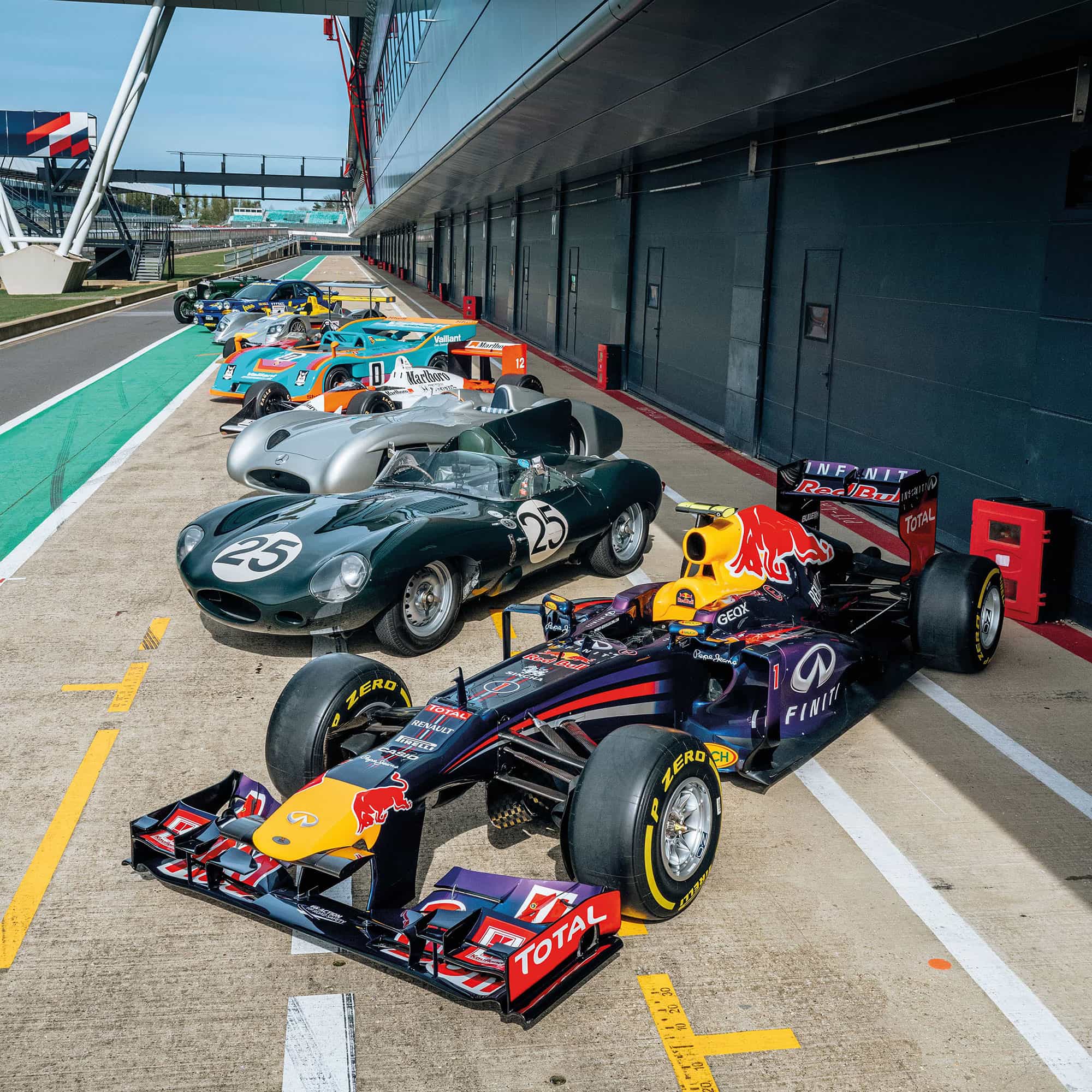The greatest racing cars of the past century — on track together
While we count the votes for the best racer of the past 100 years, Andrew Frankel takes a closer look at the shortlist – at Silverstone

What is the greatest racing car of the past 100 years? It’s a question as easy to ask as its answer is hard to find. But in this, our 100th year, it’s just too tantalising a proposition to leave at the trackside.
That answer is not the sort of thing that lends itself to statistical analysis, for while of course the car must be successful, wildly so, it must also appeal to an entire other dimension. To use a road-going analogy, Toyota has sold over 50 million Corollas in nearly 60 years, but you don’t tend to see it too near the top of lists of the world’s greatest road cars.
So it must do something else. It must connect with something within you and me that cannot simply be added up and explained. Something about it must make us do more than merely admire it for its achievements: there must be something about it that makes us adore it too. It can be the way it looks and/or sounds. It could be something so revolutionary about its design that it was not just the best at what it did, it changed the way in which it was done. It could be a car to make us goggle at the audacity of its designers, or regard with slack-jawed awe the courage of those who attempted to master it.
Or ideally it would be a combination of some, more or all of the previously stated. But to help us decide, we needed your assistance. We, the editorial team and its contributors, sat down and came up with a list of 10 cars, one from each of the decades during which Motor Sport has been on sale. And then one mercifully sunny day at Silverstone, we gathered them together for a unique celebration of not just our centenary, but the greatest competition cars there have been since the world’s oldest motor sport magazine first went on sale as The Brooklands Gazette in 1924.

The McLaren MP4/4 arrives at Silverstone – and look! It’s sunny and dry!
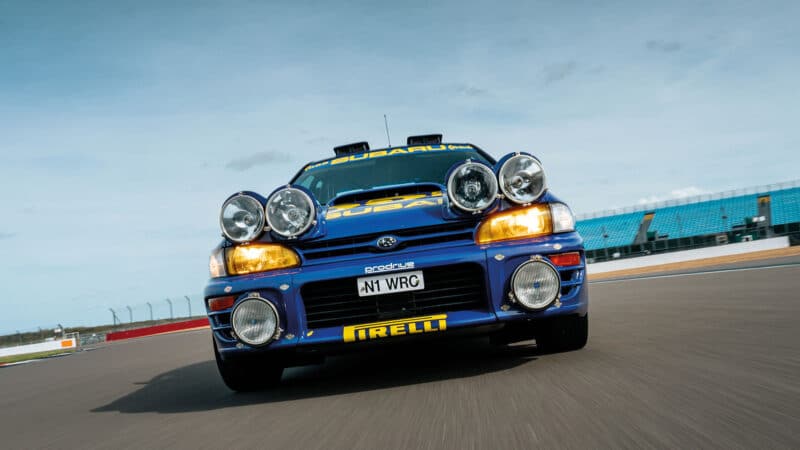
Colin McRae’s Impreza lights up the proceedings
There will, of course, be plenty of cars with glittering tales of derring-do to tell and stories of stellar success that have not made it onto the following pages: when you restrict yourself to a car per decade how could it not? But the axe had to fall somewhere and ultimately it was us who had to wield it. But it is you who decided which one gets to win and be named the greatest competition car of the past 100 years. Before we publish the results in the August issue, here’s a look at the runners and riders of Race Car of the Century.
We start in 1929 with the Bentley Speed Six. It is no exaggeration to say that, with five wins in seven attempts at Le Mans from 1924, Bentley was the first British marque to achieve sustained success at the top level of its chosen brand of the sport. It put Britain on the motor-racing map. And while all the picture books were filled with Tim Birkin in his Blower, polka-dot scarf flapping in hurricane-force winds, it was the Speed Six that got the job done. The car was so dominant at Le Mans in 1929 that WO deliberately concealed its true pace, so when pitched against Rudolf Caracciola’s Mercedes the following year – with an engine not only bigger than that of the Bentley, but supercharged too – the Speed Six of Woolf Barnato and Glen Kidston was able to grind it down, hour after hour until it succumbed to the pressure, leading Bentley to its final (until 2003) and most famous win of all.
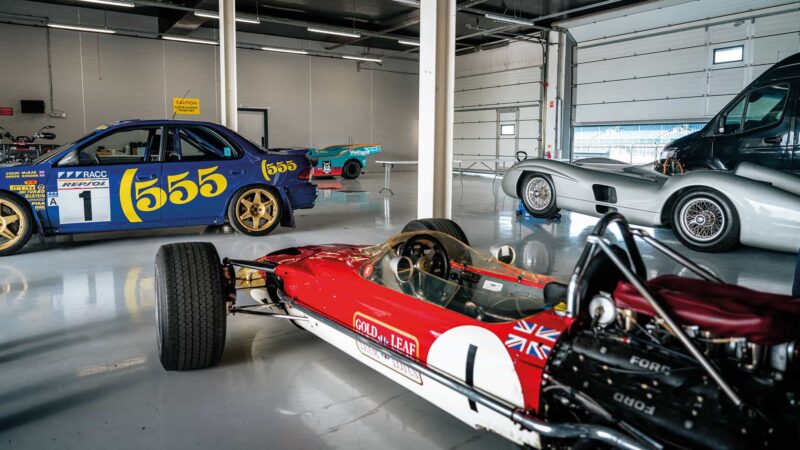
Sheltering centurions as they await their time on the track.
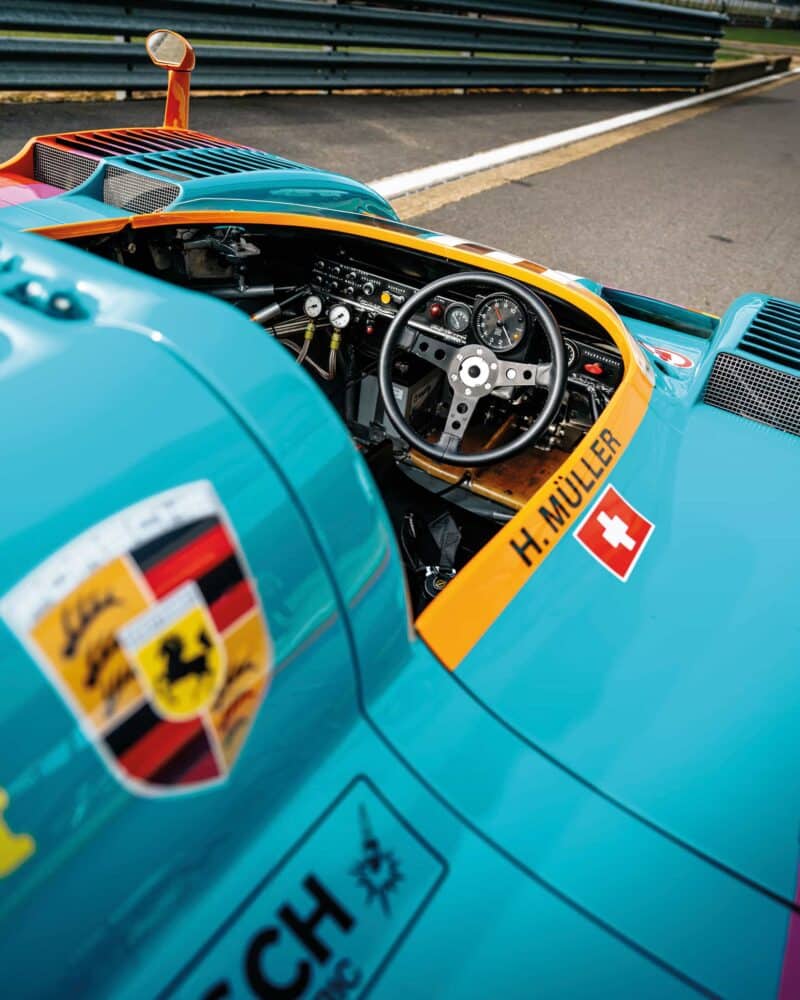
The fearsome 917
From the 1930s, it was always going to be a Mercedes-Benz, the only question therefore being which one? The W25 which changed the face of grand prix racing on its debut in 1934? The 1937 W125, which would remain the most powerful GP car ever to race until the first turbo era of Formula 1? The W154 which was the dominant force in the 1938-39 European Championships? Or even the W165, conceived in secret to evade rules designed to eliminate Mercedes from competition and which raced just once at Tripoli in 1939, the two cars coming home first and second?
“The Jaguar D-type had to outwit Ferrari’s monster V12s”
In the end the W154 was given the nod (represented in our photoshoot by a 1950s W196). In 16 races in two years, both championship and non-championship, it won 11, helping Mercedes to back-to-back European drivers’ championships. Moreover its offset, quad-cam, 48-valve supercharged 3-litre V12 motor was the most sophisticated racing engine of its era.
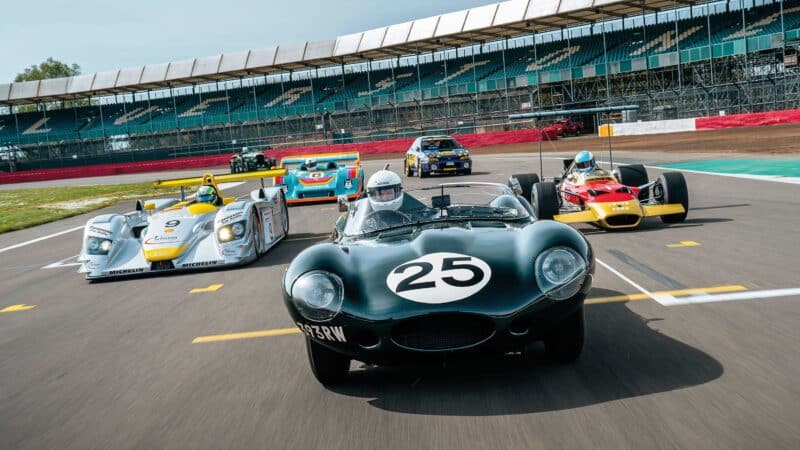
The D-type leads some of the most incredible sport machinery in history… but is it leading the votes in our Race Car of the Century?
Another fabulous V12 unit underpins the appeal of our entrant from the severely curtailed 1940s. Given this was the same decade in which the world’s greatest race car constructor was founded it seems only appropriate that it should contribute our featured car too. This V12 was fitted into the 166 MM, two of which were entered privately into Le Mans in 1949. One crashed but the other not only won the race, but its class and the Index of Performance and made Ferrari the first marque to win Le Mans at its first attempt (if you exclude the inaugural race). And it’s only been done once since, by McLaren in 1995. It was also the first V12 to win Le Mans. All credit, then, to Luigi Chinetti who drove 22 hours solo after the owner and entrant Lord Selsdon fell ill, taking his third win in the French classic 17 years after his first.
“It took an astonishing 35 years for the MP4/4’s win-to-start ratio to be beaten by Red Bull”
We remain at Le Mans for the 1950s and the Jaguar D-type which took a hat-trick of wins between 1955-57. This was such a clever car: with a straight-six engine derived from a road car and not designed to race, it was never going to outgun Ferrari’s monster V12s, so it would have to outwit them instead. This it did with its revolutionary semi-monocoque chassis and Malcolm Sayer’s superlative aerodynamics ensuring the Ds were as fast – or even faster – on the straights as the more powerful opposition. A car that could scarcely be more suited to that one particular environment.
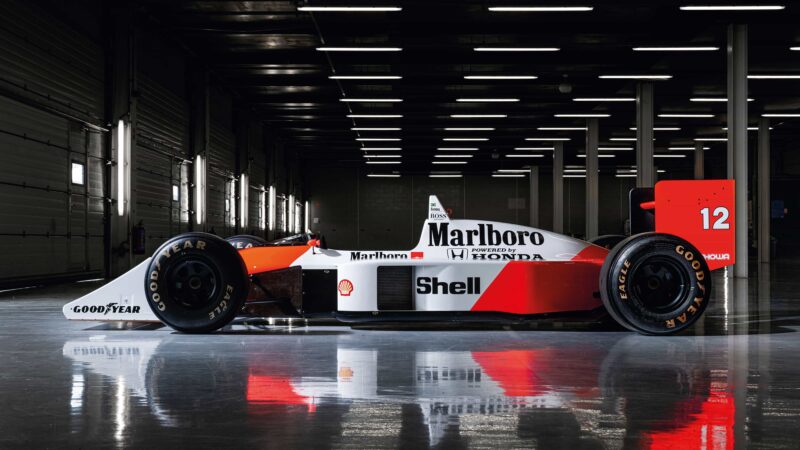
Look closely and you’ll see the name on this McLaren – Senna. In the MP4/4, Ayrton took the first of his three F1 world titles
“The Porsche 917 was the fastest and most frightening sports racing car ever conceived”
The Lotus 49 earns its place here not because it was the most powerful car in Formula 1 at the time, nor because it was the first to use its engine and transmission as stressed members because, despite what many still believe, it was neither. It was the combination of using the very short and stiff Ford Cosworth DFV as part of the chassis, its very competitive power, strong mid-range and the fact that it was bolted to an ultralight Lotus monocoque that made the difference. It arrived too late and was too unreliable for Jim Clark to take the title in 1967 (he’d end the season third, with Brabham’s Denny Hulme taking his sole F1 championship), but the following year and after the appalling loss of Clark it fell to Graham Hill to show what the car could really do. He did not disappoint, delivering both the drivers’ and constructors’ titles in Team Lotus’s most bittersweet season to date.
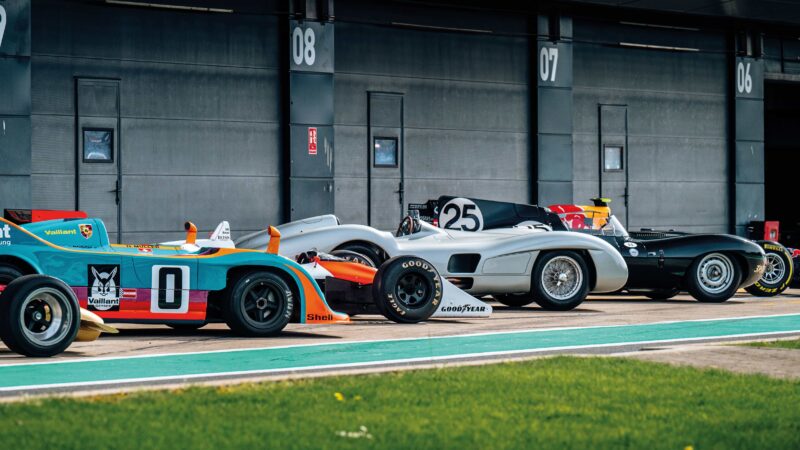
A special line-up even for Silverstone – and although the word ‘iconic’ is woefully overused these days, it fits here
If the rulemakers had had their way you’d not be reading about the Porsche 917 now because it would never have raced then; and Porsche’s determination to homologate the car by building the requisite 25 units has passed into racing lore. So too has the fact that it was by far the fastest and most frightening sports racing car ever conceived, a car that made absolute heroes out of those such as Jo Siffert and Pedro Rodriguez who mastered it, and something closer to zeroes those in other cars that tried to keep up with it.
“The presence of a single family saloon amid all the exotica may seem a little incongruous”
Porsche scored two World Sportscar Championships with it (via some key help from the 908 on slower circuits), went to America, sprouted a couple of turbos and did it all over again in Can-Am.
But if dominance is the criteria by which you’re judging your winner, the McLaren MP4/4 is surely going to figure high in your reckoning. With possibly the greatest (if not most cohesive) driver pairing in history in Ayrton Senna and Alain Prost, had the former not been tripped up at Monza, one or other would surely have won every race of the year. A combination of unbeatable Honda power and reliability, outstanding aerodynamic efficiency and those drivers, it would take an astonishing 35 years for its win to start ratio to be bettered by Red Bull last season. And at least one person is already in no doubt of its status as the GOAT; as Ron Dennis once said to me in answer to that very question: “Sixteen races, 15 wins and we built it…”
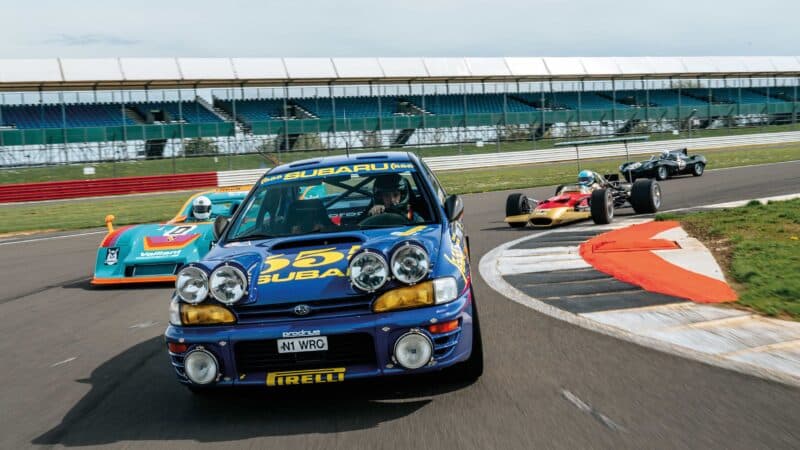
Fantasy racing
The presence of a single family saloon amid all the motor racing exotica assembled at Silverstone may seem a little incongruous, but I will not be the first to observe that it’s not what you’ve got, but what you do with it that counts. And in the case of the Subaru Impreza WRC, that was to make Colin McRae Britain’s very first World Rally champion in 1995 – front-page news at the time.
The Impreza seen and driven here is the actual car in which he won three rounds of the 1996 championship, winding up second to Mitsubishi’s Tommi Mäkinen in the title hunt. But unlike some, its statistical success is not why it is here: it is the image of perhaps the greatest raw rallying talent of all time, flying through some forest at impossible angles in a car that could have been born to showcase his skills that seared itself into the emotions of an entire generation of rally fans and which secures its place here.
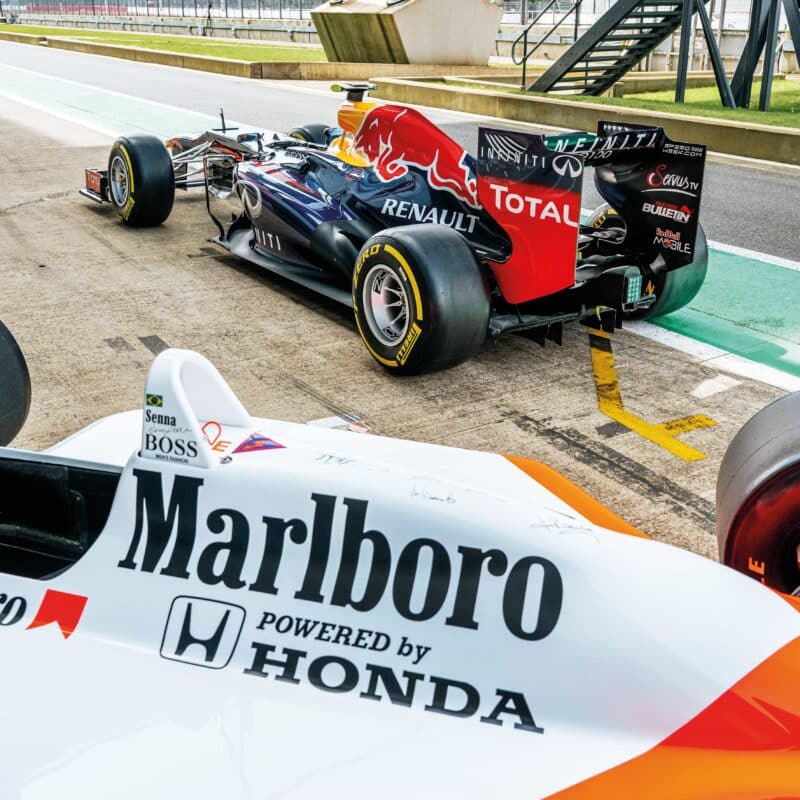
Steve Nichols vs Adrian Newey, 1980s vs 2010s, Ayrton Senna vs Sebastian Vettel – a clash of the F1 titans.
Few cars, if any, came to dominate their sport quite like the Audi R8, which reigned supreme in prototype racing for almost six straight seasons from 2000-2005, allowing just a brief hiatus for Bentley to come good at Le Mans in 2003. But what was so extraordinary about this car was that, unlike Porsche with the 956 and 962 in the 1980s, Audi had no previous track record of any kind in racing sports cars at the top level.
It appeared almost from nowhere, its predecessor’s – the 1999 R8R (the less said about the closed R8C the better) – only results coming more through simply hanging around long enough to pick up a few podiums (but no wins) than any great speed.
“It fell to Graham Hill to show what the Lotus could really do. He did not disappoint”
Two things then happened: first Audi learned the lessons of the R8R and produced an almost completely new and wildly improved successor, then the competition simply evaporated, with Mercedes-Benz and Toyota withdrawing from sports car racing entirely, BMW continuing only in America and Porsche’s much-anticipated new LMP car coming to nothing.
Does the lack of world-class opposition devalue the R8’s achievements? That would be a very harsh judgement. This was not just the fastest and most reliable car of its era, but the smartest too: memorably its entire rear end including its gearbox and rear suspension could be changed in a lot less than five minutes flat.
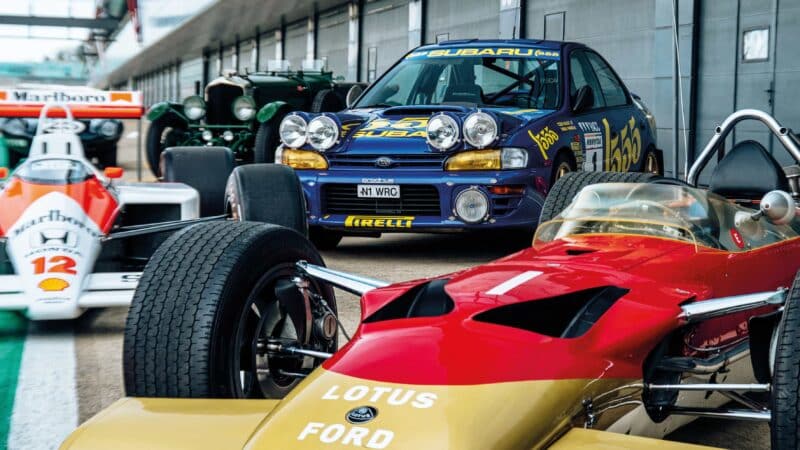
Pure racer; ‘family’ saloon; imperious touring car: racing greats come from every division
It’s also fair to say its dominance was such that it probably kept other potential rivals away. When it was eventually replaced in 2006 by the diesel R10 it had amassed five wins at Le Mans, six straight ALMS championships, countless other wins all over the world and established Audi as the dominant force in sports car racing, a position it would continue to occupy for another nine seasons.
And finally there is the 2013 Red Bull RB9, the apotheosis of the V8-powered Adrian Newey-designed Red Bulls, the car in which Sebastian Vettel claimed his fourth consecutive drivers’ world championship (all of them with Red Bull) and the one in which he took 13 wins in a 19-race season, including winning every single race in the second half of the season, a run of nine straight victories which was unprecedented in the history of Formula 1 at the time, and which to this day has been beaten only by Max Verstappen last season.
“Nine straight victories in a season was unprecedented in F1”
So what was the secret of the RB9’s success? Probably not its Renault V8 engine. More likely it was down to Newey and his team’s ability to wring every last drop of potential from a rulebook most rivals had given up on thanks to the enormous changes requiring brand new cars for the new turbo era starting the following year.
Witness the fact the team scored 219 points in the constructors’ championship in the first eight races of the season and then 284 in the last eight.
While others lost focus, Red Bull kept its eyes on the prize and, in the process, turned the RB9 into the most successful F1 car of its or any previous era.
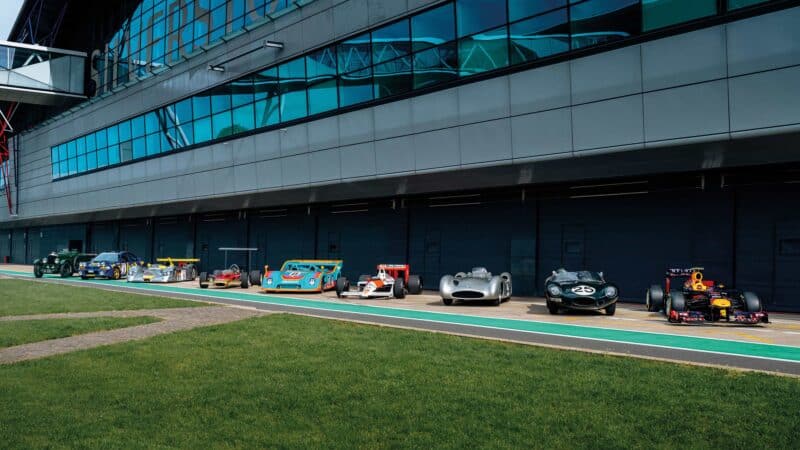
By the time you read this, Race Car of the Century will already have closed and the votes counted…
| Bentley Speed six | Subaru Impreza WRX | Audi R8 | Lotus 49 | Porsche 917 |
| The most successful racing Bentley of its era, the Speed Six won Le Mans in 1929 and ’30 – and Britain arrived as a force in motor racing | With a little help from David Richards’ Prodrive, this warbling saloon in the hands of Colin McRae took on the world in 1995 and won; a nation was smitten | The race stats are astounding. Sixty-three wins from 79 races including five out of six at Le Mans from 2000-05; it’s a similar story in ALMS | Coupled with a Cosworth DFV, the 49, after a shaky first year, brought results for Colin Chapman. At the wheel Graham Hill took the F1 world title in 1968 | Dominated the World Sportscar Championship in 1970 and ’71 and began Porsche’s winning streak at Le Mans; Can-Am example here followed |
| McLaren MP4/4 | Mercedes W154 | Jaguar D-Type | Red Bull RB9 | Ferrari 166 mm |
| A perfect match of design and power, the McLaren-Honda, in the hands of Ayrton Senna and Alain Prost, left the field in its wake: 15 out of 16 wins | OK, this is a 1950s W196 at Silverstone; it’s standing in for the W154. Both had no equal – peak engineering designed with few budget constraints | The Big Cat’s love affair with Le Mans was secured with the D-type’s three consecutive victories from 1955, including a 1-2-3-4 rout in 1957 | Adrian Newey’s Formula 1 car for 2013 coincided with Sebastian Vettel in imperious form, with 13 victories and a fourth consecutive world title | Alas, a last-minute postponement on our track day, but this is the car that started Ferrari’s Le Mans adventure – a winner in ’49 |

